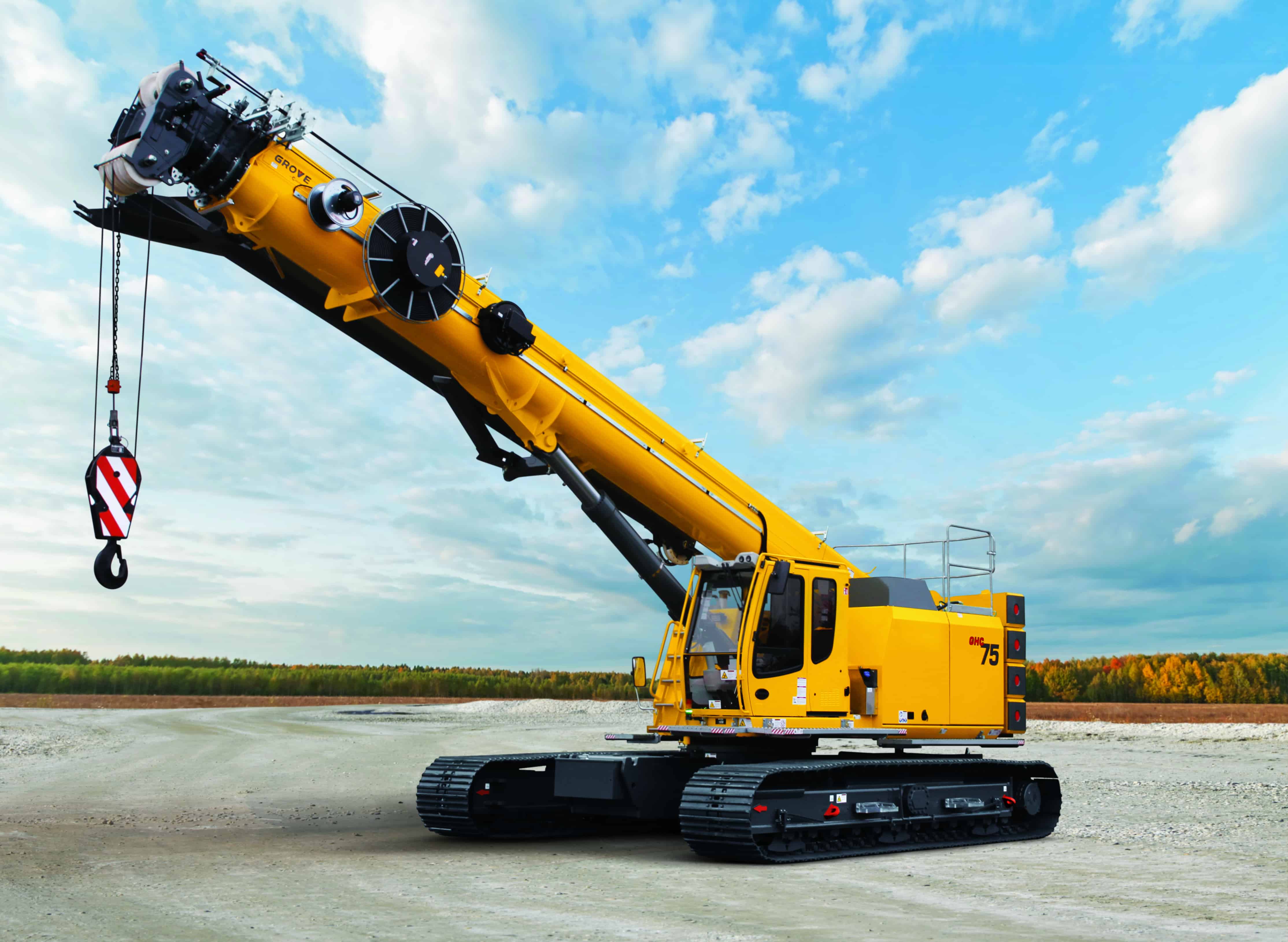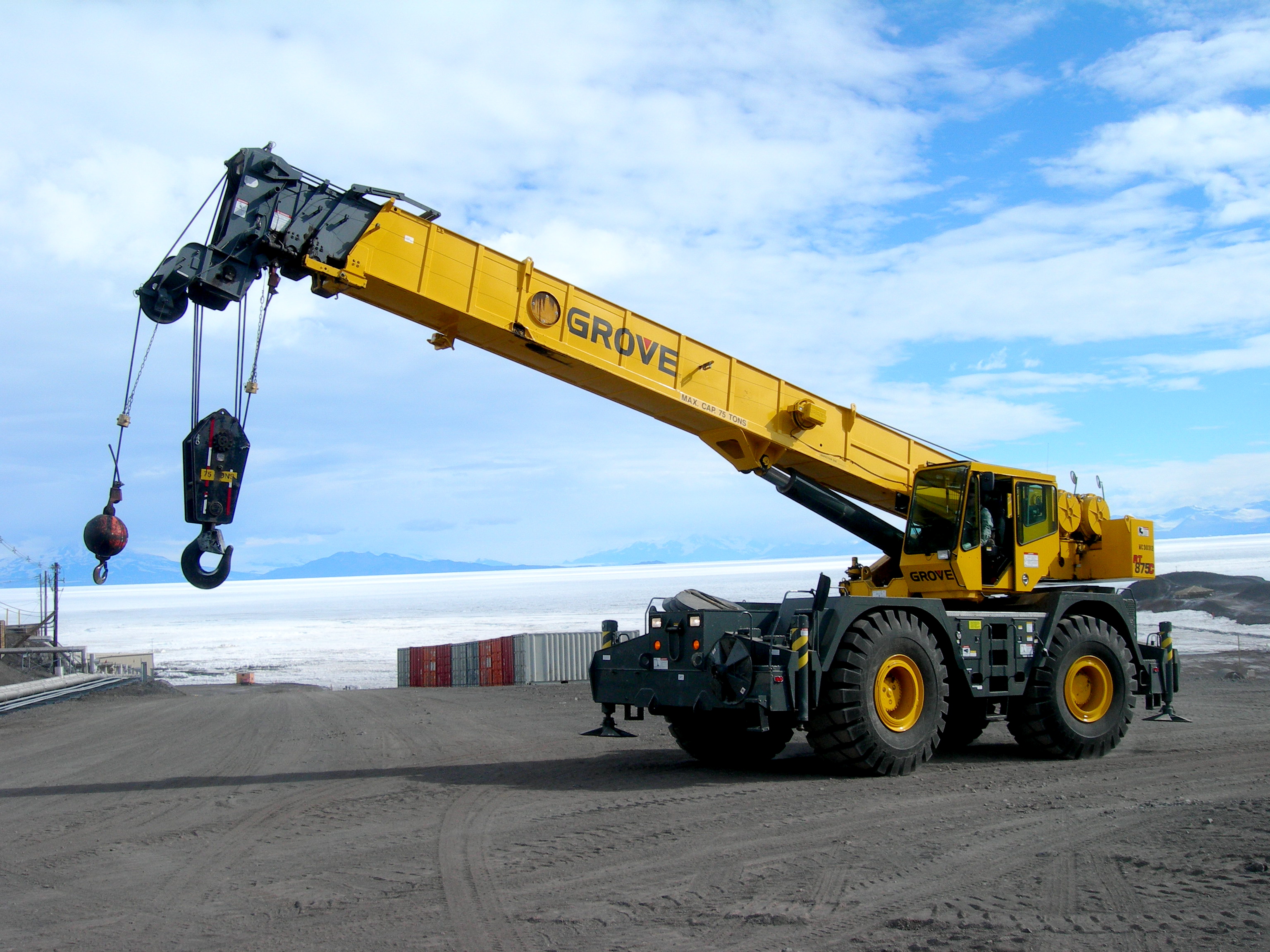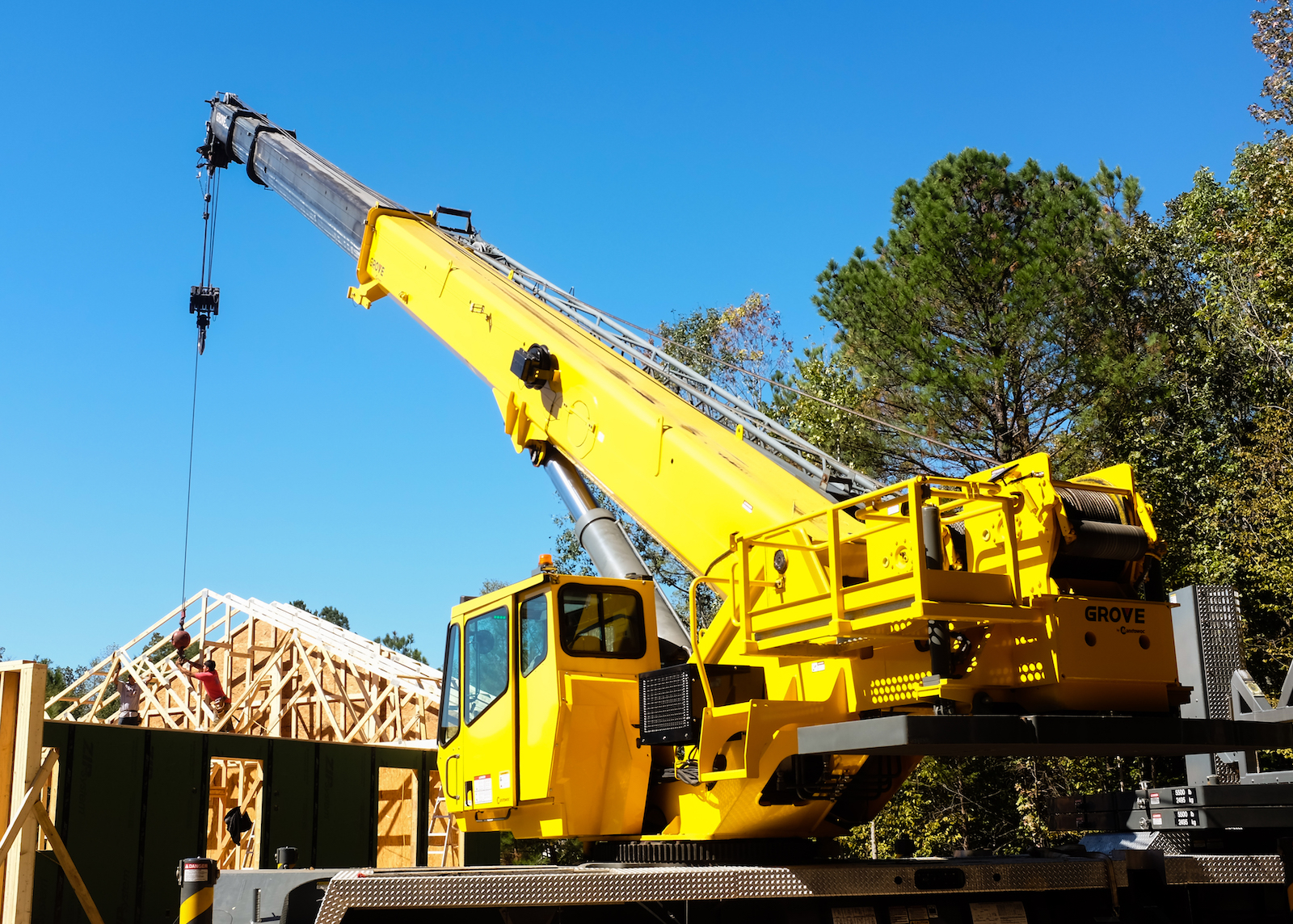Crane Bob: Simplifying Container Image Management For Everyone
Handling container images in today's fast-paced development world can feel like a big job, can't it? You've got builds happening in CI/CD pipelines, images needing to be stored, and sometimes, you just want to check if a particular image is even there. It often feels like you need a full Docker engine just to poke around your registries, which isn't always practical, especially in automated setups. This is where tools that work directly with registries become incredibly useful, making those tricky tasks a lot more straightforward, you know?
For a while now, folks working with container images have been looking for ways to manage things without always needing a local Docker daemon running. Maybe you're building with something like Kaniko in a GitLab CI/CD pipeline, and you want to push your freshly built container straight to a remote Docker repository. Or perhaps you're thinking about moving your Docker registry from an older version, like v1, to the much newer v2, and you need a good way to see what images are even on there. This kind of work, it really makes you think about better ways to do things, doesn't it?
That's where tools like Google's 'crane' come into play. It's one of those handy utilities that helps you get things done with container registries without a full Docker setup. Think of it as your go-to helper for common registry chores. We're going to explore what we call "crane bob" today, which is basically about how `crane` lets you "bob" through these registry operations with surprising ease and directness. It’s a pretty neat way to get things done, actually.
Table of Contents
- What is Crane, Anyway?
- "Crane Bob": Making Registry Tasks Easy
- Crane Bob in Your CI/CD Pipeline
- Migrating Registries with Crane Bob
- Frequently Asked Questions About Crane and Registries
- Embracing Crane Bob for Your Registry Needs
What is Crane, Anyway?
Crane, a tool from Google, is a really helpful command-line utility for interacting with container image registries. It’s a bit different from your usual Docker command-line interface because it doesn't need a Docker daemon running in the background. This makes it super useful for situations where you can't or don't want to have a full Docker engine around, which is quite common in automated build environments. It’s designed to work directly with the registry APIs, giving you a direct line to your images, so.
Think about it: when you're building a Dockerfile using something like Kaniko in a GitLab CI/CD pipeline, you're already operating without a local Docker daemon. You build your container, and then you want to push it to a remote repository. Crane fits right into this kind of setup, allowing you to manage those images without any extra fuss. It’s very much about getting straight to the point with your container image tasks, actually.
Besides crane, there are other tools out there that do similar things, like Skopeo from Red Hat or Regclient. Each has its own strengths, but crane has become a pretty popular choice for many folks because of its straightforward approach and its focus on efficiency. It’s certainly a strong contender when you need to handle images outside of a traditional Docker environment, you know?
The Core Idea Behind Crane
The main idea behind crane is to give you a light and direct way to work with container registries. Instead of relying on a local Docker daemon to pull, push, or inspect images, crane talks straight to the registry itself. This means it can be incredibly fast and efficient, especially when you're dealing with remote repositories. It’s a bit like having a specialized tool for a specific job, rather than a big toolbox, you know?
This direct interaction is particularly valuable in CI/CD pipelines. Imagine a build stage that needs to both create a container and then push it to a remote registry. If you're using something like Kaniko, which builds images inside a container without a Docker daemon, crane can then take over to handle the pushing or any other registry operations. It really streamlines the whole process, making things much smoother, that is.
The design of crane also means it can handle various registry versions and formats pretty well. Whether you're working with an older Docker Registry v1 or looking to move to the newer v2, crane aims to provide a consistent way to interact with them. This flexibility is a big plus for anyone managing different types of container infrastructure, and it’s something that makes it stand out, too.
"Crane Bob": Making Registry Tasks Easy
When we talk about "crane bob," we're really talking about the simple, direct, and often quick ways that the `crane` tool helps you manage your container images. It's about how `crane` lets you "bob" around your registry, performing common tasks with a light touch and without unnecessary overhead. This approach makes everyday image management feel a lot less heavy, in a way.
For example, if you just want to get a list of images present on a registry, `crane` can do that for you with a simple command. You don't need to spin up a Docker client or mess with complex APIs. It’s about getting the information you need, fast. This kind of directness is what makes "crane bob" so appealing for many folks who deal with container images regularly, you see.
The beauty of "crane bob" is its focus on efficiency and ease of use for specific, common registry operations. It's not trying to be a full-blown Docker replacement; instead, it's a specialized helper that excels at what it does. This specialization means it can often perform these tasks more quickly and with fewer resources, which is quite handy, especially in automated scripts, really.
Listing Images with Crane Bob
One of the first things you might want to do when looking at a container registry is to get a clear list of what's stored there. With older registry versions, like v1, getting this list was sometimes a bit of a challenge. You might have had to jump through some hoops to see all your images and their tags. Crane, as part of the "crane bob" philosophy, makes this task very simple, actually.
Using `crane`, you can just point it at your registry, and it will give you back a clear rundown of the images. This is incredibly helpful for inventorying your assets or just quickly checking what's available before you try to pull something. It's a straightforward command that saves you a good bit of time and effort, and that's a big plus, isn't it?
For example, if you're trying to figure out what images are sitting on a private repository, `crane` can fetch that list for you directly. This capability is a significant improvement over methods that require a full Docker daemon just to peek into your registry. It's all about making information easily accessible, which is a core part of what "crane bob" aims to achieve, so.
Checking Image Existence
Imagine you're running a bash script, and as part of that script, you need to confirm if a specific Docker image and tag combination already exists on Docker Hub, especially if it's a private repository. This kind of check is super important for avoiding duplicate pushes or for conditional logic in your CI/CD pipelines. With traditional methods, this might involve trying to pull the image and seeing if it fails, which isn't the most graceful way to do it, is it?
This is where "crane bob" truly shines. `crane` provides a very direct way to check for an image's presence without actually downloading the entire thing. It queries the registry directly for the image's metadata, giving you a quick yes or no answer. This saves bandwidth and time, making your scripts much more efficient, and that's quite useful, you know?
This ability to efficiently check for an image's existence is a key reason why developers and operations folks find `crane` so valuable. It means you can build smarter automation that reacts to the current state of your registries, rather than just blindly trying operations. It’s a small thing, perhaps, but it makes a big difference in how smoothly your pipelines run, really.
Copying Images Between Registries
Moving container images from one repository to another can sometimes feel like a chore, particularly if you want to do it without a Docker client in between. Maybe you're moving images from a staging registry to a production one, or consolidating images from different sources. The traditional way might involve pulling the image down locally and then pushing it back up, which can be slow and resource-heavy, right?
With "crane bob," meaning the `crane` tool, there's a much more efficient way. `crane` can copy an image directly from one registry to another. It handles the transfer server-side, or at least without needing to fully download the image to your local machine first. This makes the process much faster and uses fewer local resources, which is pretty neat, you know?
This direct copying feature is a game-changer for many workflows. It means you can orchestrate image movements with simple commands, making your deployment strategies more flexible and quicker. Whether it's for disaster recovery, multi-region deployments, or just reorganizing your image storage, `crane` makes this task feel much less complicated, which is a relief, honestly.
Handling Digests and Metadata
When you're working with container images, the SHA256 digest is super important. It's like a unique fingerprint for your image, ensuring that what you pull is exactly what was pushed. You often see this digest when you download an image, but what if you want to find it without actually pulling the whole thing? This is where `crane` proves its worth again, too.
Part of the "crane bob" approach is making it easy to inspect image metadata, including those all-important digests. `crane` allows you to fetch the digest of a Docker image directly from the registry. This is incredibly useful for verification, for scripting, or for ensuring you're referencing the exact version of an image. It's about getting precise information quickly, you see.
Knowing the digest upfront can help you build more secure and reliable pipelines. You can use it to verify image integrity or to ensure that a specific version of an image is being used across your environments. This capability, to just grab the digest, is a small but powerful feature that helps you keep things in order, and it's certainly a handy thing to have, really.
Crane Bob in Your CI/CD Pipeline
The modern CI/CD pipeline is all about automation and efficiency. You want your build, test, and deployment stages to run smoothly, without unnecessary dependencies or slowdowns. This is where the "crane bob" way of doing things, using the `crane` tool, fits in perfectly. It helps bridge the gap between your build processes and your container registries in a very clean manner, so.
For instance, if you're using Kaniko to build your Docker images within your GitLab CI/CD setup, you're already operating in an environment where a full Docker daemon isn't present. After Kaniko finishes building the image, you need a way to push it to your remote repository. `crane` can take over right there, handling the push operation directly and efficiently. It's a natural fit, really.
Moreover, if your pipeline needs to check if an image exists before building or pushing, or if it needs to copy an image from one internal registry to another as part of a release process, `crane` provides the commands to do all of this without needing to bring up a heavy Docker client. It helps keep your CI/CD agents lean and focused on their primary tasks, which is quite helpful, you know?
Why Crane Bob Fits CI/CD So Well
The primary reason "crane bob" is such a good match for CI/CD environments is its daemon-less operation. Traditional Docker commands often require a running Docker daemon, which can add overhead to your CI/CD runners or even introduce security considerations if not managed carefully. `crane` bypasses this entirely, talking directly to the registry, which makes things simpler, you see.
This direct approach means faster execution times for registry-related tasks. When you're running hundreds of builds a day, every second saved matters. `crane`'s lightweight nature and direct communication mean less setup time and quicker operations for listing, checking, and moving images. It really helps speed things up, that is.
Also, `crane`'s ability to work with private repositories and handle authentication securely makes it a reliable choice for automated pipelines. You can configure it with credentials, allowing your CI/CD jobs to interact with your private image stores without human intervention. It provides the automation capabilities you need without compromising on security or efficiency, which is a big deal, actually.
Migrating Registries with Crane Bob
If you're thinking about moving your Docker registry from an older version, like v1, to the newer, more capable v2, you're probably wondering how to get all your existing images across. This can be a significant undertaking, especially if you have a lot of images. The good news is that "crane bob" offers some pretty useful ways to help with this migration, so.
One of the biggest challenges in a registry migration is making sure you get a complete list of all images and then efficiently move them. With registry v1, getting a comprehensive list of images was not always straightforward. `crane` can help by giving you a clearer picture of your images, which is a crucial first step in any migration plan, you know?
Once you have your inventory, `crane`'s ability to copy images directly from one repository to another becomes incredibly valuable. You can set up scripts to iterate through your v1 registry, pull images (or just their manifests if possible), and then push them to your new v2 registry. This streamlines the transfer process significantly, making the migration much less painful, really.
It also helps with handling image digests during migration. When you copy an image, you want to ensure its integrity is maintained. `crane` works with these digests, helping you confirm that the image on the new registry is identical to the original. This kind of verification is essential for a successful and trustworthy migration, and it’s something that gives you peace of mind, too.
Frequently Asked Questions About Crane and Registries
What is Crane and why use it for container images?
Crane is a command-line tool developed by Google that helps you work with container image registries. You use it because it lets you perform common image operations, like listing, checking, and copying, without needing a full Docker daemon running on your machine. This makes it super efficient for automated environments like CI/CD pipelines, and it’s pretty handy, actually.
How can Crane help with Docker registry tasks without a Docker daemon?
Crane helps by communicating directly with the registry's API. This means it doesn't rely on a local Docker engine to do its work. So, if you're in a build server or a minimal environment, you can still list images, check if a particular image exists, or even copy images between registries directly. It really simplifies things, you know?
Can Crane assist in migrating or managing images between different registry versions?
Yes, Crane can definitely help with that. If you're moving from an older Docker Registry v1 to a newer v2, Crane can help you list the images from the old registry and then efficiently copy them over to the new one. It handles the direct transfer, which saves a lot of time and effort compared to pulling everything down and pushing it back up, so.
Embracing Crane Bob for Your Registry Needs
As you can see, the "crane bob" approach, using the `crane` tool, offers a really straightforward and effective way to manage your container images. From listing what's in your registry to checking for specific images and even copying them between different locations, `crane` provides a set of powerful yet simple commands. It's especially useful for anyone working in CI/CD pipelines or dealing with registry migrations, where a full Docker daemon isn't always the best fit. It really simplifies the daily grind of image management, doesn't it?
Adopting `crane` can make your automated workflows more efficient and your manual registry tasks much quicker. It helps you keep your container images organized and accessible, giving you better control over your software supply chain. If you're looking for a direct, no-fuss way to interact with your container registries, then exploring what `crane` can do for you is a very good idea. You might find it becomes one of your favorite tools, actually.
To learn more about how `crane` works and to get started with it, you can check out its official repository. It's a great place to find documentation and examples for all sorts of tasks. Learn more about container image tools on our site, and for more specific guides, link to this page .
For more technical details on the `crane` tool, you might want to visit the Google Container Registry project on GitHub. It's a great resource for seeing how it all comes together

crawler crane | Pro Lift Crane Service

File:Grove Crane in Antarctica.jpg - Wikimedia Commons

Crane Rental | Macemore Crane | Upstate South Carolina